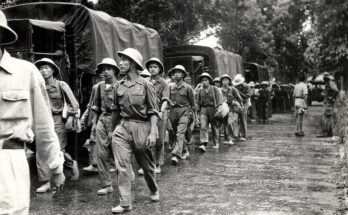Who Were the Vikings?
The Vikings were more than just seafaring raiders with horned helmets (which, by the way, is a myth). Originating from Scandinavia, the Vikings were Norse people who left a lasting mark on Europe from the late 8th to early 11th centuries. But what exactly drove these formidable people to embark on their epic adventures? Let’s delve into their world.
The Viking Age: A Brief Overview

The Viking Age, spanning roughly 793 to 1066 AD, was a period of exploration, conquest, and cultural exchange. It all began with the infamous raid on Lindisfarne, a monastery on the northeast coast of England, in 793 AD. This marked the start of a centuries-long era where Vikings spread their influence far and wide.
Raiders Extraordinaire
The Art of the Raid
Viking raids were swift and brutal. Their longships, marvels of engineering, allowed them to strike suddenly and retreat before local forces could muster a defense. Coastal villages, monasteries, and even fortified towns were not safe from their reach.
Why Did They Raid?
Economic necessity and opportunity were major motivators. Scandinavia’s harsh climate made farming challenging, and raiding offered a chance to acquire wealth, resources, and even slaves. Additionally, their raids were deeply tied to their warrior culture, where glory and riches were highly esteemed.
Traders Across Continents
Beyond the Sword
Contrary to popular belief, the Vikings were also accomplished traders. They established extensive trade networks that stretched from the Arctic Circle to the Mediterranean and beyond. Viking merchants traded goods like furs, amber, and walrus ivory for silver, spices, and textiles.
Trading Hubs
Key trading hubs like Hedeby and Birka became bustling centers of commerce. Here, cultures mingled as goods from Asia, the Middle East, and Europe changed hands. These vibrant marketplaces highlight the Vikings’ role as cultural intermediaries.
Explorers of the Unknown
Pioneers of the Atlantic
The Vikings’ exploratory spirit was unmatched. They ventured westward to the British Isles, Iceland, Greenland, and even North America. Leif Erikson, a Viking explorer, is credited with reaching Vinland (modern-day Newfoundland) around 1000 AD—nearly 500 years before Columbus set sail.
Navigational Mastery
How did they achieve such feats? The Vikings used a combination of sun compasses, landmarks, and an acute understanding of sea currents and winds. Their navigational skills were so advanced that they could traverse vast, uncharted waters with remarkable accuracy.
The Viking Longship: A Game-Changer
The iconic Viking longship was central to their success. These versatile vessels were fast, lightweight, and capable of navigating both open seas and shallow rivers. This adaptability allowed the Vikings to raid, trade, and explore with unparalleled efficiency.
Society and Culture
A Warrior’s World
Viking society was deeply hierarchical, with jarls (nobles) at the top, followed by freemen, and thralls (slaves) at the bottom. Their culture celebrated bravery, loyalty, and prowess in battle, as reflected in their sagas and oral traditions.
The Role of Women
Women in Viking society had more rights and freedoms compared to many contemporary cultures. They could own property, divorce, and even wield significant power in the absence of male relatives. Some women, known as shieldmaidens, even participated in battle.
Check: The Indus Valley Civilization’s Contributions to Modern Society
Religion and Mythology
Gods and Legends
The Vikings worshiped a pantheon of gods led by Odin, the all-father, and Thor, the thunder god. Their myths and legends, recorded in the Poetic and Prose Eddas, are rich with tales of heroism, betrayal, and cosmic battles.
Conversion to Christianity
By the end of the Viking Age, many Norse people had converted to Christianity, influenced by their interactions with Christian Europe. This shift marked a significant transformation in their cultural and religious identity.
Impact on Europe
Founding Cities and Kingdoms
The Vikings didn’t just raid; they also settled and integrated into local communities. They founded cities like Dublin in Ireland and Normandy in France. In England, they left a linguistic and cultural legacy that persists to this day.
Military Innovations
The Vikings’ military tactics and technologies, such as their use of shield walls and axes, influenced European warfare. Their longships inspired advancements in naval architecture.
Misconceptions About Vikings
Did They Wear Horned Helmets?
The iconic image of Vikings wearing horned helmets is a 19th-century invention. Archaeological evidence suggests their helmets were simple and practical, designed for protection rather than intimidation.
Uncivilized Barbarians?
Far from being uncivilized, the Vikings had a sophisticated culture with advanced craftsmanship, poetry, and governance systems. Their legacy proves they were much more than mere plunderers.
Viking Legacy in Modern Culture
From Hollywood movies to video games, the Vikings continue to capture the imagination. Shows like Vikings and The Last Kingdom have popularized their stories, albeit with some artistic liberties.
Check: The Indus Valley Civilization’s Contributions to Modern Society
Conclusion
The Vikings were raiders, traders, and explorers, but they were also much more. They were skilled navigators, artisans, and cultural intermediaries whose influence is still felt today. Their legacy serves as a reminder of humanity’s enduring spirit of adventure and innovation.
FAQs
1. What caused the end of the Viking Age?
The Viking Age ended due to a combination of factors, including the rise of centralized kingdoms in Europe, increased resistance to Viking raids, and the Vikings’ gradual conversion to Christianity, which changed their cultural priorities.
2. How did the Vikings influence modern languages?
The Vikings’ Old Norse language influenced English and other European languages. Words like “sky,” “knife,” and “window” have Norse origins.
3. Were all Vikings raiders?
No, not all Vikings were raiders. Many were farmers, traders, and craftsmen. Raiding was just one aspect of their multifaceted society.
4. Did the Vikings discover America?
Leif Erikson and his crew reached North America around 1000 AD, centuries before Columbus. However, they did not establish permanent settlements.
5. Why are Vikings so popular in modern media?
Vikings are romanticized for their adventurous spirit, warrior ethos, and rich mythology. Their larger-than-life stories resonate with audiences worldwide.


